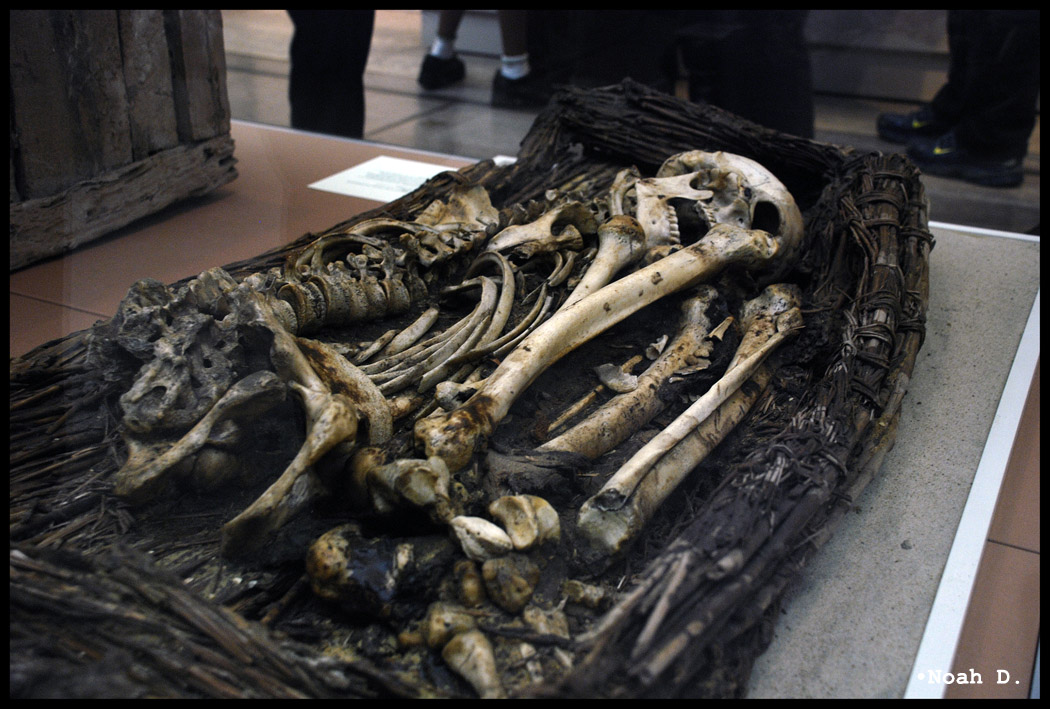**
ORIGINALLY POSTED: 7 June 2008
**
Some of you may read this fairly regularly. Those who do may have come to notice a pattern in my travels. Even a pattern in the way I write concerning certain things: I love to connect things.
I connected the dots of the Obelisk that stands in front of the Louvre in Paris across the thousands of miles to the Luxor Temple in Egypt. Things like this means a lot to me…
…well, as you also may have noticed, my journeys are also beginning to draw to a close.
So, I had some final tying up of loose ends to do. Where else to do it but here?
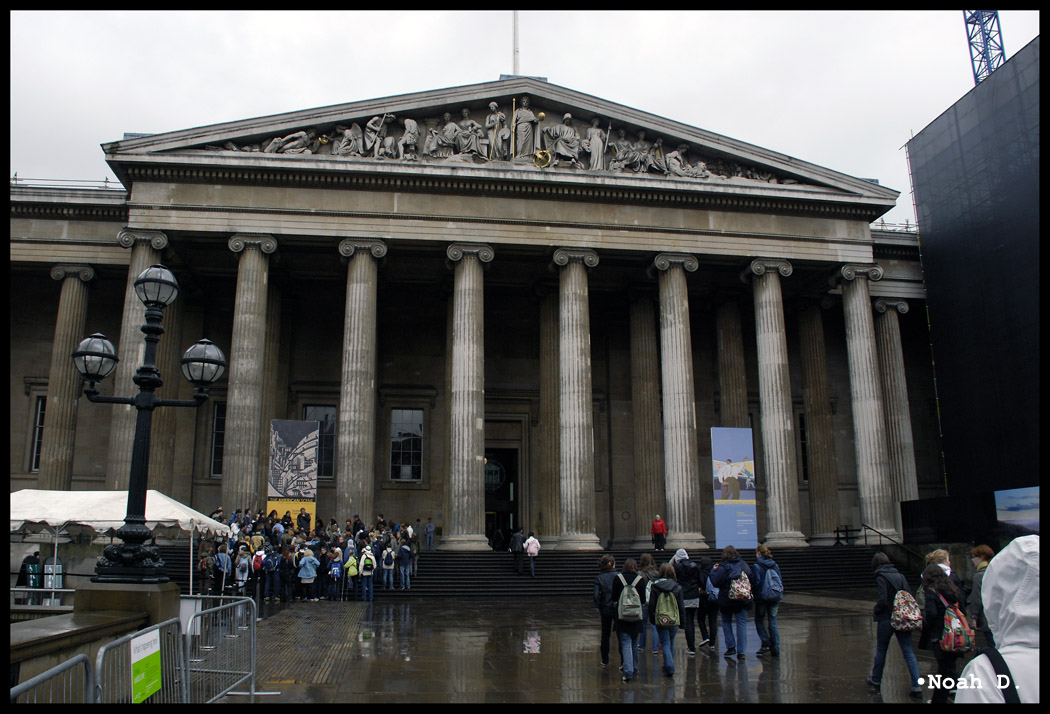
This is the British Museum in – you guessed it – my final stop in almost 4 months overseas…

…London, England.
There may be some of you thinking, “Another museum!? This kid is SUCH a nerd!”
Yeah, I probably wouldn’t have done it, either… if it didn’t have such things in it that tie so much of history together. Like, the reason why we know so much about the ancient Egyptians and their culture – by being able to decode the hieroglyphics that cover everything. That would be this:
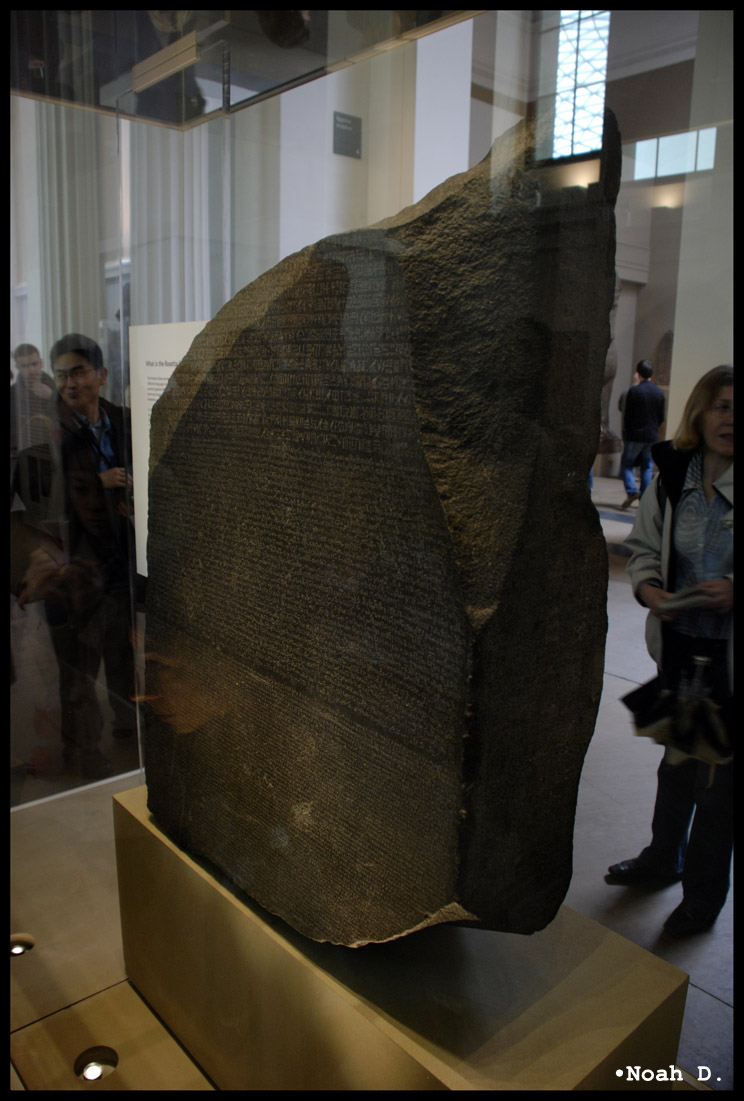
…the Rosetta Stone. One of only a handful of objects the Egyptians want back in Cairo, the Rosetta Stone was the key that unlocked hieroglyphic writings. We saw a duplicate of the stone in the Cairo Museum and were taught about it there… but this was the real thing.
See?
Now, think back… think ALL the way back to one of the first blogs from Europe – the one concerning the Acropolis. There was the porch of the Erechtheion with 6 Caryatids holding up the roof. Here a flashback for you:
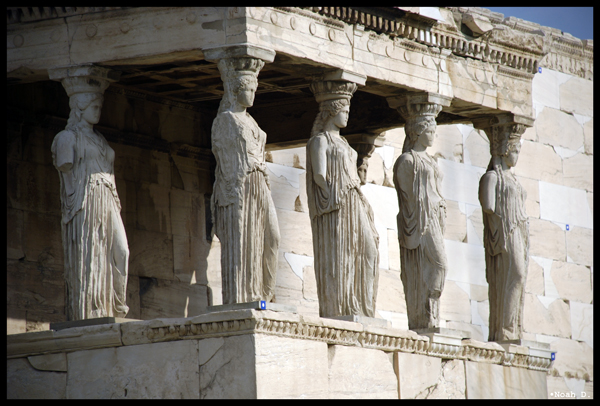
Well, these that stand here are copies, placed there after the originals were taken to ensure their preservation. All but one is in the Acropolis Museum – that wasn’t open while we were there because the new building wasn’t completed yet. So, needless to say, we were unable to see the 5 that are still in Greece.
The other one is here. Right here:
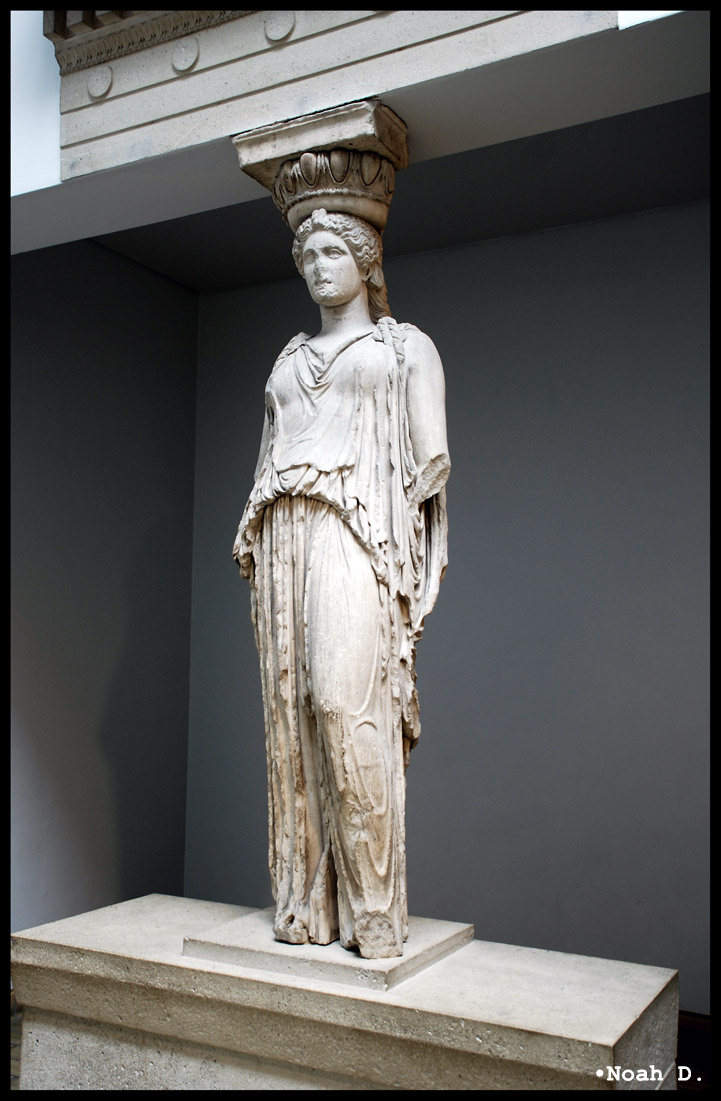
There’s another loose end.
And that also brings me to a bit of a rant that I’ve been promising you for weeks. Back in the 1800’s there were no real laws in Greece to prevent people from taking artifacts out of the country. Well, a rich guy from England went to Greece to the Acropolis and started to do some excavations. His real name was Thomas Bruce – but now he’s (in)famously known as Lord Elgin.
During his excavations, he began to collect some of the carvings and friezes from the front and sides of the Parthenon. At first he only collected the ones that had fallen down when the Parthenon exploded (yes, it really exploded – but that’s another story). That’s all well and good, but he didn’t stop there. He decided that he wanted the REST of the pieces to complete the puzzle.
So what did he do?
Yes, he sent his men to chisel off the rest of them from the Parthenon. Yep, literally stripped them completely off…
…until he had the entire set.
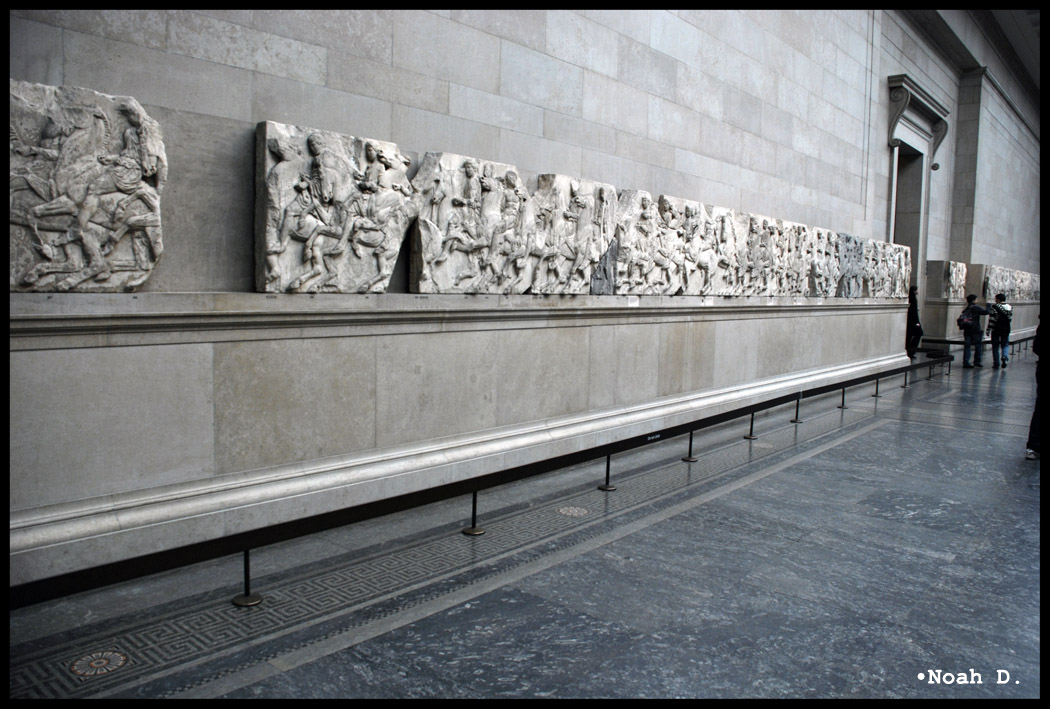
…and then he didn’t stop there. He took all the carvings from Parthenon – inside AND out – as well as ALL of the existing pieces to both front and back pediments!
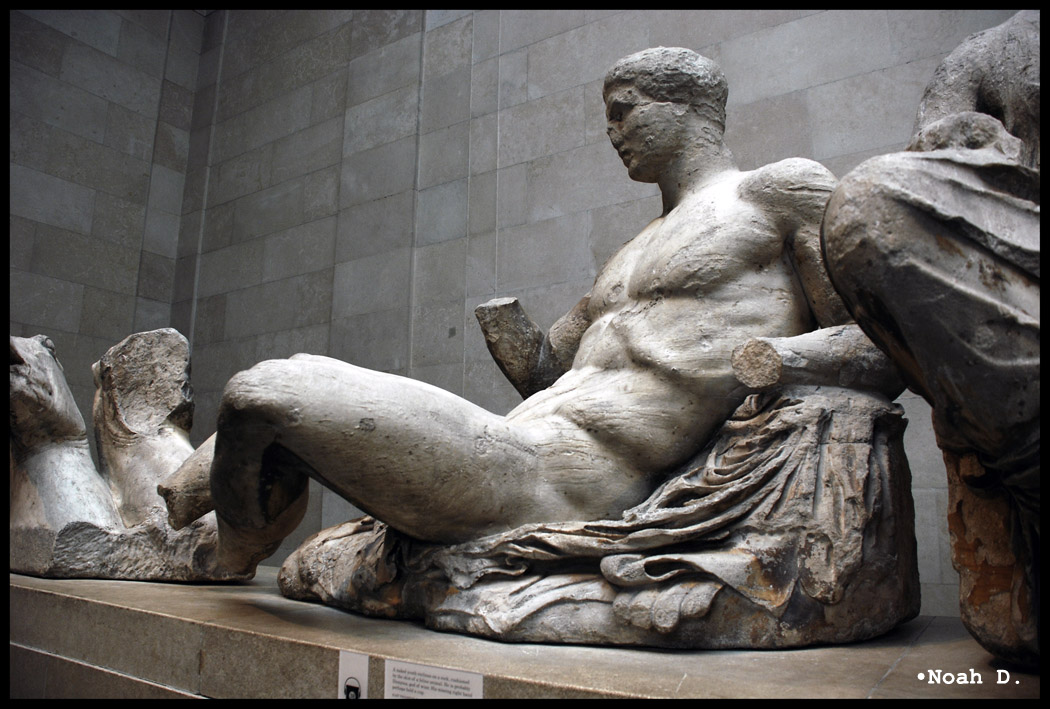
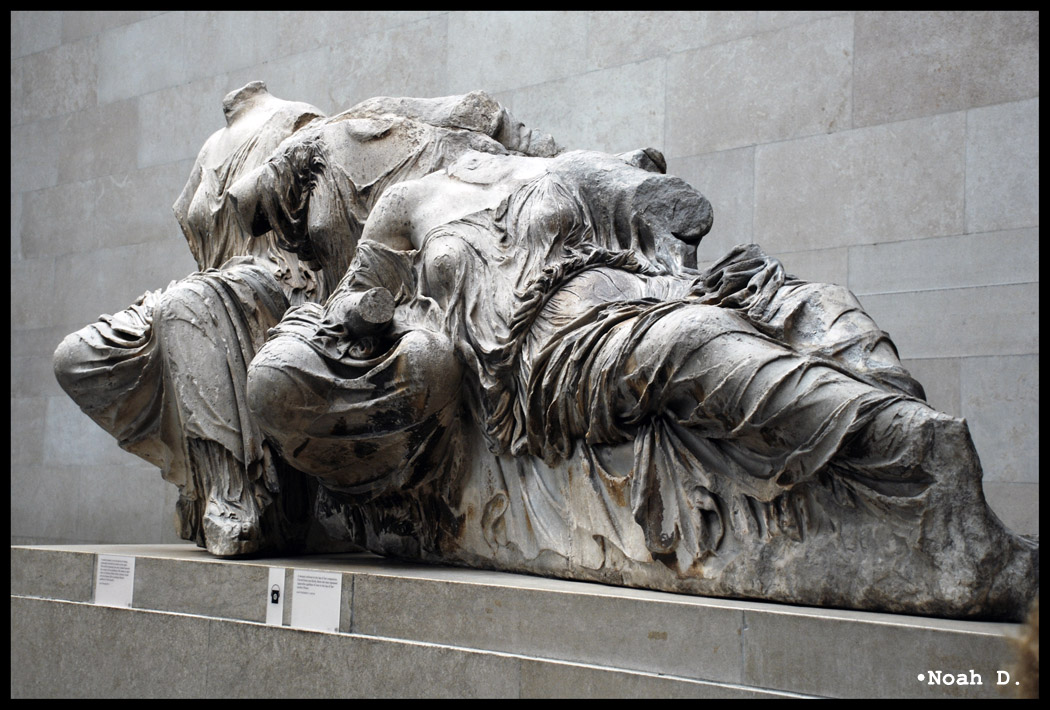
…leaving the Parthenon completely stripped of its adornments.
Okay, I’m sure you may be having a bit of a difficulty putting the pieces together. So here you go: this is the flashback to visualize… here’s the real Parthenon:

Enlarge it and take a look along the top. Whoa! Looks familiar, right!? This one on the Parthenon is a copy… of the one Lord Elgin took off. Oh yeah, and all those carvings there on the front? Copies, too.
And here’s the kicker – see how there is an inner ring of columns and there’s an empty face on the stone at the top? Possibly a space that something once plugged into? Where are the things that used to fill this still-empty space?
Right here:

Its taking decades of more time to repair the damage that Lord Elgin did by stripping the Parthenon of its original carvings. Of course, the originals would not be left up there on the pediment indefinitely, but at least the Greek restorers would have unrestricted access to them…
…but right now, the Parthenon looks a little naked to me… knowing what its supposed to look like. The Greeks are exceptionally bitter toward the British Museum for this…
Kick my cat or steal the Parthenon marbles… both are pretty horrible sins.
In an effort to tie up even more loose ends, the Parthenon Marbles are probably at the top of the list for me. Spend a few months in a country with people with as much pride in their history as the Greeks and you’ll start to see…
…just to beat the dead horse, here’s the Parthenon copy:
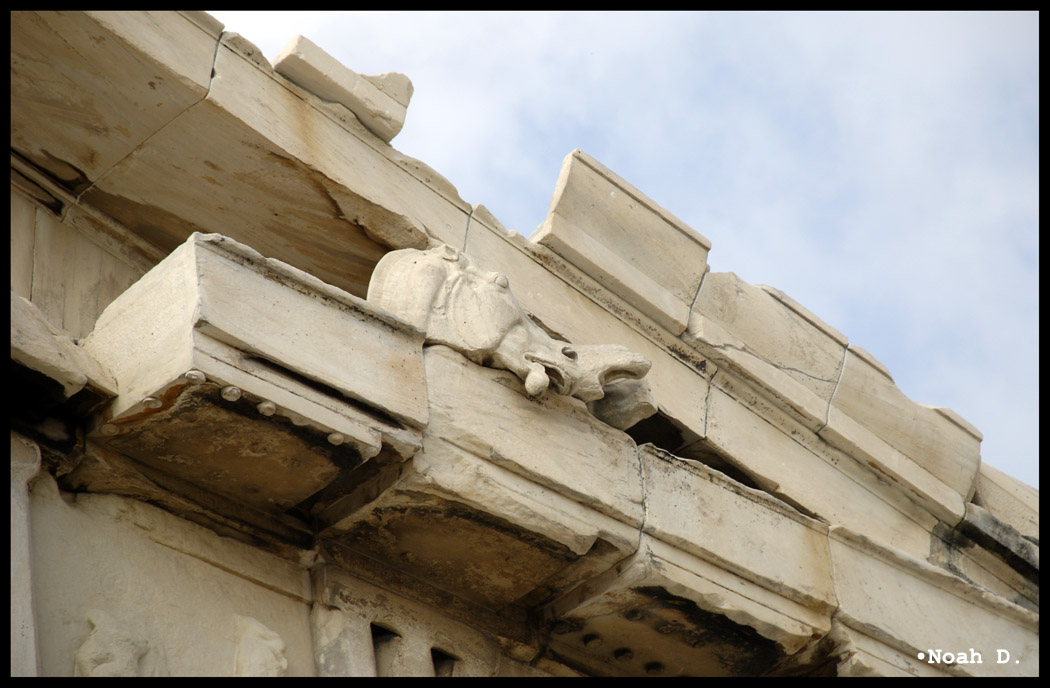
…and the original:
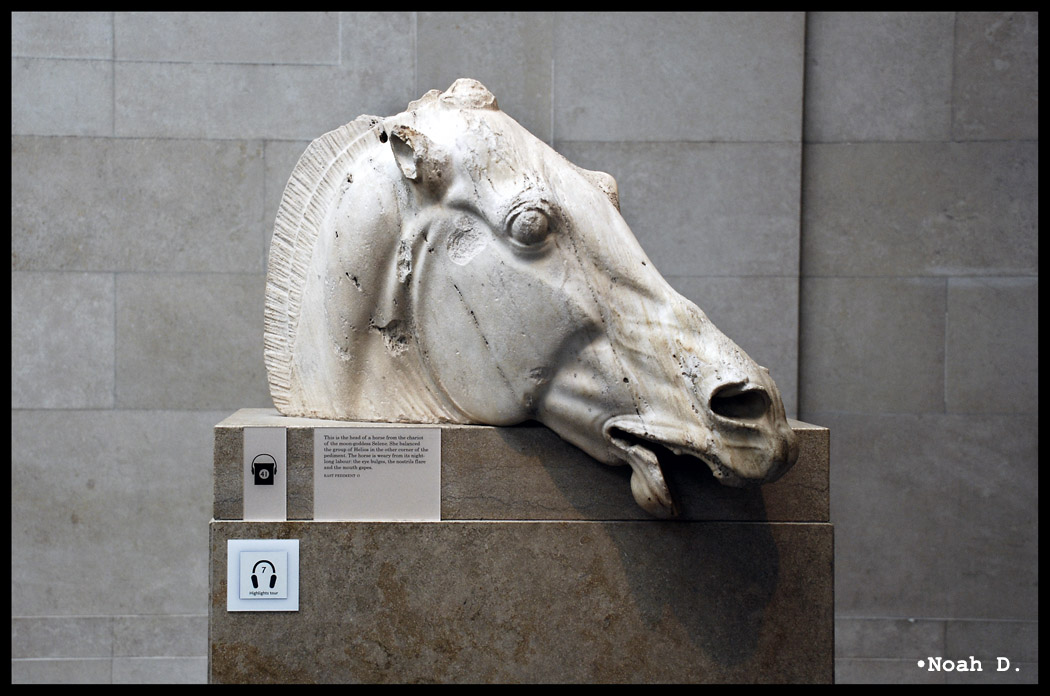
There’s just something wrong here.
Other than my pun… beat a dead horse… a horse… get it?
Mmhmm…
Alright… moving on…
So, if you’ve been counting, I’ve seen the Pyramids, the Lighthouse at Alexandria (the location, at least), the Statues of Zeus at Olympia (where it was constructed and where it sat in the temple), the Colossus of Rhodes (the location), and the Temple of Diana at Ephesus… that’s 5 of the 7 Wonders of the Ancient World.
Well, here’s the remaining pieces of my #6 – the Mausoleum at Halikarnassos.

Then again, I didn’t actually go to Halikarnassos for this one – so I guess I’ll have to count this as a half… instead of 6 of the 7, we’ll say 5.5 of 7. Someday I’ll get back over to Turkey and see what’s left – mostly the foundation and scattered ruins.
And don’t worry, these were done a little bit more legit. They weren’t chiseled off, thank goodness.

What haven’t I seen? The Hanging Gardens of Babylon will remain elusive to me, I fear. They are for everyone… nobody really knows where they were. I guess the ruins of Babylon in the southern reaches of Baghdad, Iraq, would be as close as I could get.
But that probably won’t be happening anytime soon.
So, 5.5 of the 7 ain’t bad at all for 4 months in the Mediterranean World. That ties up a pretty major loose end for me… it closes my chapter on the 7 Wonders.
Alright, nevermind… just looking for a segue there and I opted for the abrupt…
We studied this little guy:

But otherwise, the British Museum contained a bunch of other stuff that was significant – but not quite significant to me. There’s an exhibition of early Jackson Pollack works (before he got a bit crazy) and a comparison or two to sketches of Michaelangelo.
But on our way out, we passed a the huge clear donation box. I forgot to mention, the British Museum is completely free. So, we looked for a moment in the donation box and saw US dollars, British pound, Euro, Swiss Francs, and even Czech Korunas – all of which I also had on me – so I went through my wallets and tried to find something nobody had donated yet (that could be see in the box, at least).
Well, that’s my Jordanian Dinar at the bottom right.
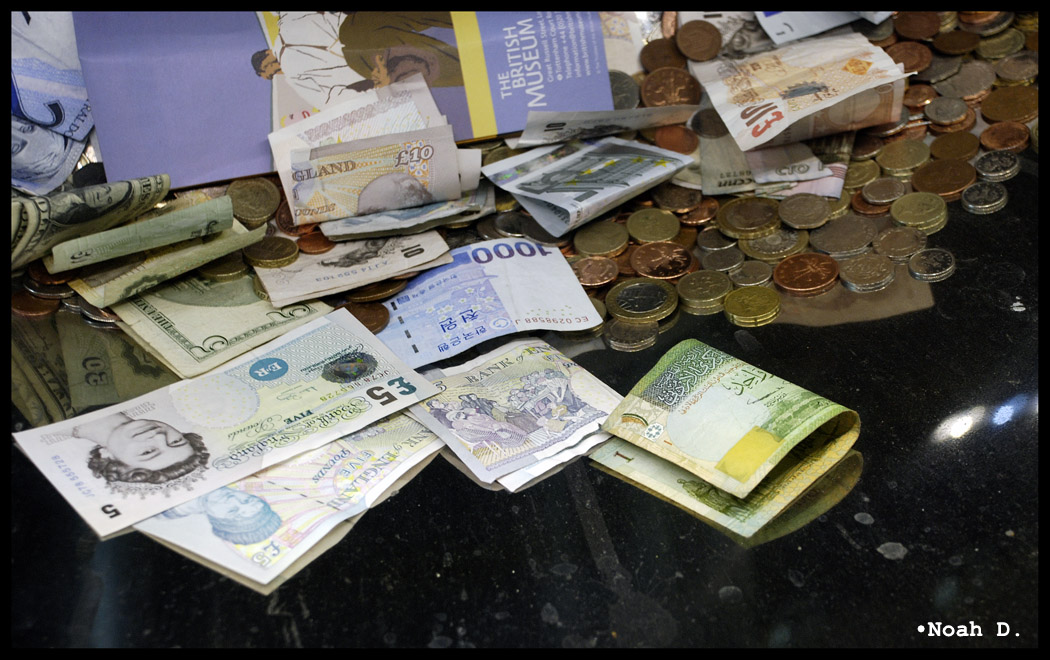
I wonder if that seems spiteful…
But, if they bother to exchange it, they’ll see the Jordanian Dinar would be far better to use than the US dollars in there! Yep, it trades almost even with the Euro! Hooray for strong Middle East economies!
As far as some things go, the British Museum closed a massive part of my travels abroad. There would be no more new discoveries now; neither would there be any more “need to see” things.
As irked as I feel about the Parthenon Marbles, I left the British Museum feeling a strange sense of completion and accomplishment. It was as if all the pieces of the puzzle had now been found and I could begin fitting the pieces together in my mind…
…and in my photos.
I don’t see these things in my imagination or in my books anymore; I see these in my photos and in my memory.
Its getting rather late now and I think I’ve come to a good stopping point. There is still more of London to see. Promise, I went somewhere other than the British Museum.
That WOULD be nerdy of me…
Stay tuned.
~Noah D.



